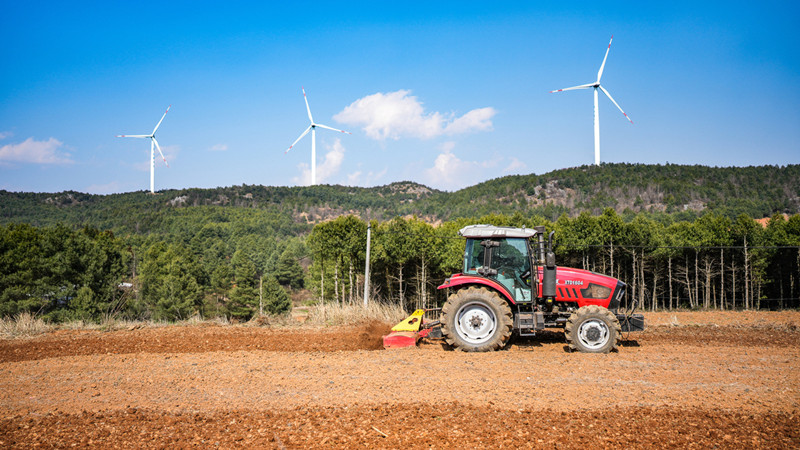Modernizing agriculture to ensure food security

A farmer works in a field in Shayu village of Panzhou city, Guizhou province, Feb 9, 2023 [photo/Xinhua]
The "No 1 Central Document" for 2023, unveiled by the Communist Party of China Central Committee and the State Council, China's Cabinet, on Monday, pledges to advance the national policy of rural vitalization and accelerate the modernization of rural areas. As the first policy paper released by the central authorities this year, this is the 20th "No 1 Central Document" of this century to focus on agricultural and rural affairs.
China has been carrying out the rural vitalization program since 2017, giving priority to the development of agriculture and rural areas, and accelerating their modernization. After the eradication of extreme poverty at the end of 2020 thanks to the targeted poverty alleviation program, the central leadership decided to expedite the rural vitalization program from 2021, shifting the policy's focus from poverty alleviation to rural vitalization.
Some remarkable achievements have been made in rural vitalization. From 2017 to 2021, for instance, the per capita disposable income of rural residents in China increased by 28.9 percent, which helped narrow the income gap between urban and rural residents: urban residents' disposable income reduced from 2.71 times to 2.5 times that of rural residents.
And by the end of 2022, the country's grain output had totaled more than 650 million tons for eight consecutive years.
In October, the report to the 20th CPC National Congress proposed to speed up building China into a bigger global agricultural powerhouse, promote the revitalization of agribusinesses and talents, and improve the agricultural ecosystems and organizations in rural areas.
With its total grain output being the highest in the world, China has basically become self-sufficient in food grains. At the beginning of 2023, the Ministry of Agriculture and Rural Affairs said the country's grain production will increase by 50 million tons given the strong base of 650 million tons. The setting of the goal suggests overall agricultural productivity will be further increased and food security better safeguarded.
But the country is still some way from becoming a global agricultural powerhouse, because, thanks to its huge population but limited cultivable land, it heavily relies on intensive farming, resulting in high cost and low efficiency in food production. So to build up its strength in agriculture, China has to modernize its agriculture.
To begin with, the government has to ensure that the total cultivable land is no less than 1.8 billion mu (120 million hectares) and develop 1.54 billion mu of the cultivable land into high-quality farmland. It should also make sustained efforts to invigorate the seed industry and grow multiple grain varieties, while taking measures to ensure per unit crop yield increases by 6.4 percent in the next decade.
The agricultural authorities also need to increase the area of cultivable land and optimize the crop planting structure. In fact, an additional 10 million mu of soybean (for oil) will be grown in the future. Besides, the government and enterprises need to increase investments in agricultural technologies and promote innovation, because breakthroughs in technologies will give the country a competitive edge in agricultural production. Also, the authorities should improve farming production management, in order to prepare farmers to face and overcome disasters, and reduce food loss in the production and harvesting processes.
The establishment of a complete supply chain for agricultural products, a traceability system and dedicated financial services are also essential for the modernization of agriculture, which in turn can strengthen food security and cultivate agricultural brands.
The authorities should also promote innovations in the farming system, from tilling of the land and sowing to harvesting, processing and packaging. Specifically, the authorities need to improve the income guarantee mechanism for grain producers and the compensation mechanism for major grain-growing areas; mobilize social capital to increase investment in agriculture and cultivate agricultural entrepreneurs; promote agribusinesses to boost farm production; and create favorable conditions for farmers to become urban residents. All this will help scale up agricultural production and business.
Only when all these measures are implemented can China become a bigger global agricultural powerhouse, and ensure food security while striving to realize common prosperity for farmers. This is the Chinese path to agricultural modernization.
(The author is a professor at the Rural Development Institute, Chinese Academy of Social Sciences)
Writing by Feng Xing Yuan (China Daily); editing by Wang Jingzhong








